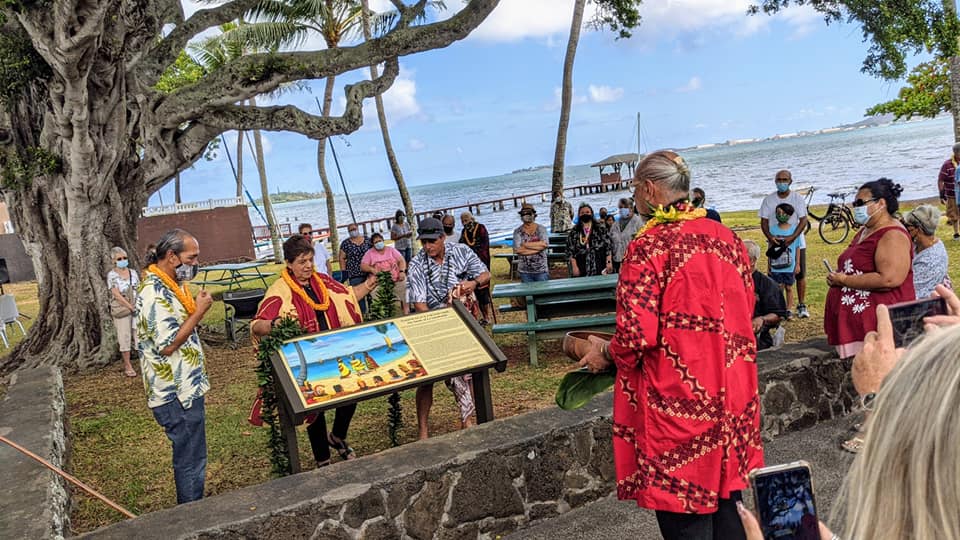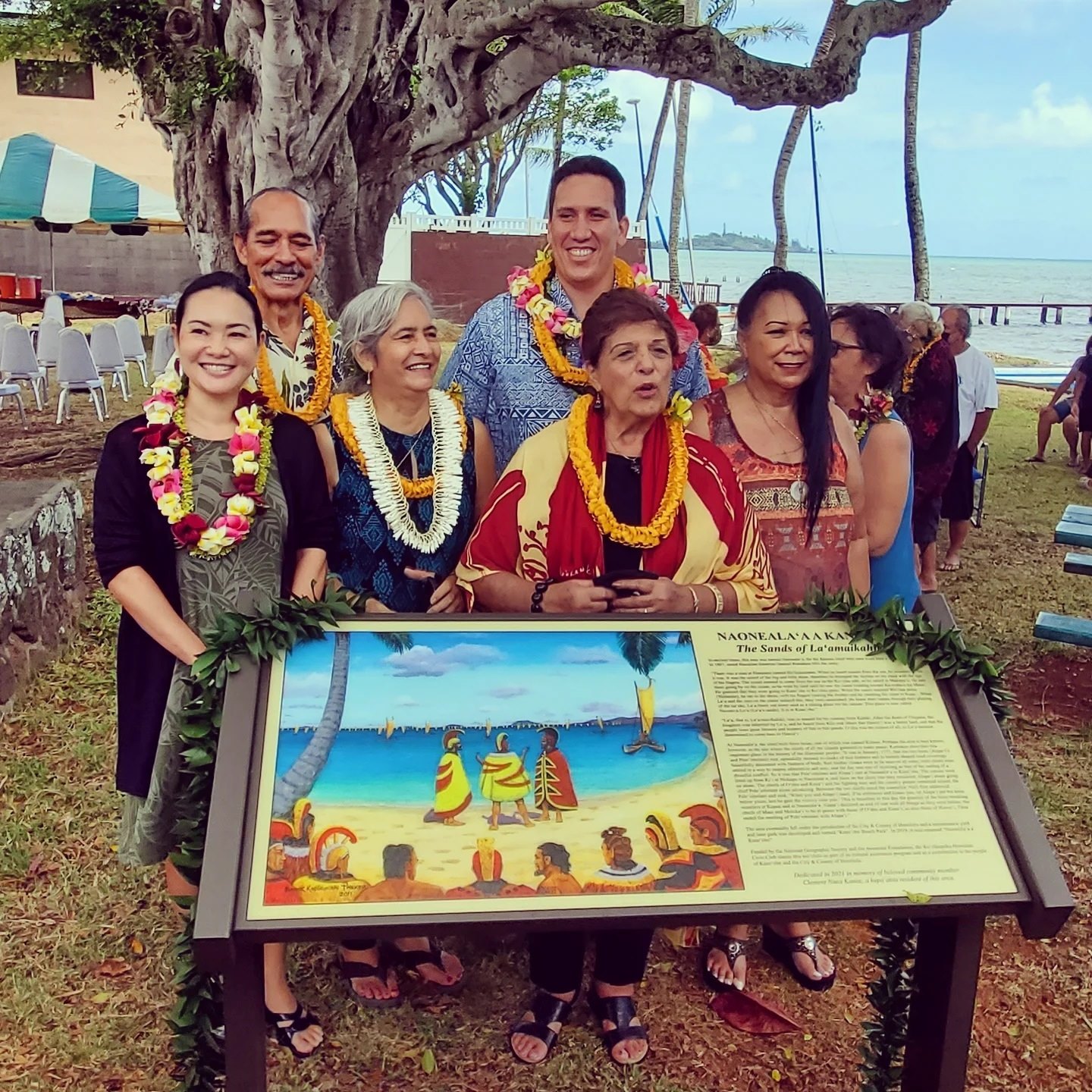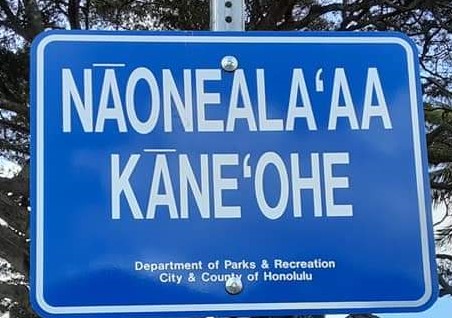Earlier this week the Honolulu Star-Advertiser reported a local effort to drive awareness to the historic significance of Kāne‘ohe Beach Park and restore its Hawaiian place name, Naoneala‘a, meaning “the sands of La‘amaikahiki.”
This coastal area of Kāne‘ohe is named after the famous chief La‘amaikahiki who is said to have come from Tahiti. Mo‘ōlelo tell us that the newly appointed chief sailed by canoe around the island and decided to stop at this beach. From his canoe, he announced his official presence, throwing sand onto the shore. The beach was then named Naoneala‘a after him–“naone” means sand and “la‘a” is an abbreviation of his name. The new chief resided here through his reign and built three heiau in the area. His descendants became ali‘i on Hawai‘i, Maui, O‘ahu, and Kaua‘i.
Naoneala‘a is also significant as the site of a major peacemaking ceremony. In 1737, after years of war among the islands, ali‘i of Maui, O‘ahu, Kaua‘i and Hawai‘i Island gathered at Naoneala‘a. Hundreds of warriors from O‘ahu and Kaua‘i stood on the hillsides above the beach, and hundreds more waited aboard canoes along the coastline from Naoneala‘a to Mokapu. On the beach at Naoneala‘a, Chief Alapa‘i of Hawai‘i Island and Chief Peleioholani of O‘ahu, adorned with ceremonial capes and helmets, came together and declared an end to war–that “all shall be as it was before.”
The original name of this popular beach park and its historical significance will now be more widely known thanks to the efforts of the Ko‘olaupoko Hawaiian Civic Club (KHCC). On July 30th, members of the civic club celebrated the dedication of a new storyboard at Naoneala‘a that shares its origins. The signage project was funded through a grant from the National Geographic Society Foundation and with additional funding from the Awesome Foundation and Ko‘olau Foundation.
According to Mahealani Cypher, a KHCC member who helped spearhead the effort, the signage project came into being as an offshoot of another project called “Ka Welina” led by Cultural Advisor Ramsay Taum some years ago. Participants took part in discussions and training on cultural site stewardship and establishing protocol for hosts and guests at sacred cultural areas.
At the time, a key deliverable for the civic club was the development of a website with information about their cultural awareness program. That experience subsequently led to the grant from the National Geographic Society Foundation and the idea of the storyboard.
KHCC also advocated to change the beach park’s name to reflect its place in Hawaiian history and received City Council approval in 2019. Community members said that the park’s ancient name, Naoneala‘a, has been forgotten and they are happy to see the effort to restore it come to fruition.
“It’s really exciting to know what the history is behind the area that we live,” said Cypher. “When people know where they live was a place of great honor, dignity or significant events in history, it makes them proud of where they live.”

Above and at top: members of the Ko‘olaupoko Hawaiian Civic Club at the storyboard’s dedication ceremony. Photos courtesy of Mahealani Cypher.
- Naoneala‘a by Brook K. Parker
- City sign with misspelling
This post is based on information from Mahealani Cypher and the news article “Residents honor Kaneohe Beach Park’s place in Hawaiian history” by Jayna Omaye, Honolulu Star-Advertiser, August 3, 2021. All photos courtesy of Mahealani Cypher.




